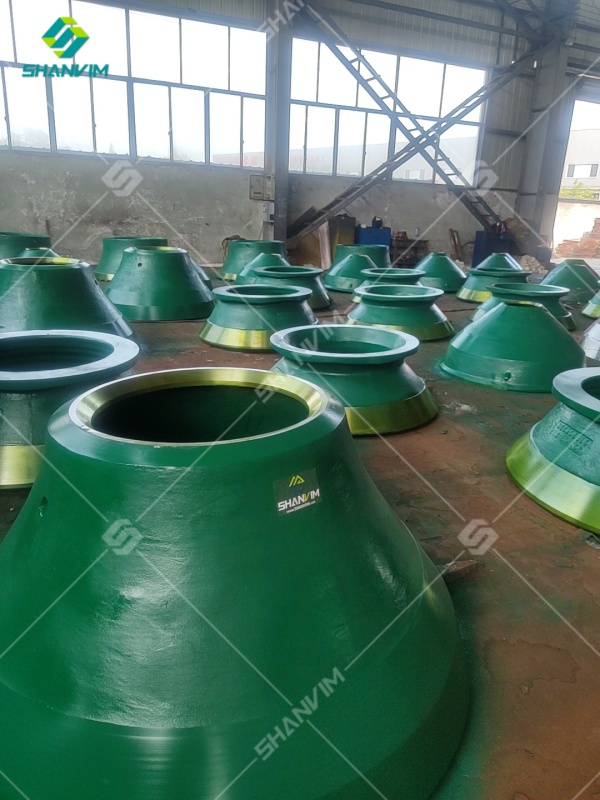Cone crushers play a vital role in the mining industry, often serving as secondary or tertiary stage crushers in production lines. Available in single-cylinder and multi-cylinder designs, they offer high efficiency, a large crushing ratio, and low energy consumption. They are widely used in sectors such as building materials, mining, railways, metallurgy, water conservancy, and highways for medium-fine and super-fine crushing of hard rocks, ores, slag, refractory materials, and more.
When tramp iron enters a cone crusher during operation, it can cause varying degrees of damage to key components like the lower frame, main shaft, and eccentric copper sleeve. This not only disrupts the production line but also significantly increases the maintenance workload for repair crews. Today, SHANVIM discusses how to address and prevent tramp iron incidents in cone crushers.
Solutions for Tramp Iron Entry in Cone Crushers:
During operation, the motor drives the eccentric sleeve via the transmission system, causing the mantle to gyrate. The area where the mantle approaches the concave forms the crushing cavity, where materials are crushed by repeated compression and impact. When the mantle moves away, sufficiently crushed material falls under gravity and is discharged from the bottom.
If tramp iron enters, its hardness prevents it from being crushed, causing it to jam between the mantle and concave. This instantaneously spikes the pressure and power draw, raising the oil temperature. The crusher’s system detects the tramp iron and responds by reducing pressure, lowering the main shaft, and increasing the discharge opening to expel the iron and minimize damage. However, this process can still cause significant harm to the crusher.
So, what should you do when tramp iron enters a cone crusher? Follow these three steps for a quick resolution:
1.Activate the hydraulic cavity clearing system: Open the hydraulic solenoid valve to reverse the oil supply to the bottom hydraulic cylinder. The cylinder lifts under oil pressure, raising the support sleeve via the piston rod’s nut end face.
2.Expel the tramp iron: As the support sleeve lifts, a strong opening force is created between the mantle and concave. The lodged tramp iron will gradually slide down under gravity and be expelled from the crushing cavity.
3.Cut oversized iron pieces: If the tramp iron is too large to be expelled hydraulically, use a cutting torch to slice it before removal from the cavity.
Important Safety Note: During these operations, personnel must ensure no part of their body enters the crushing cavity, as internal parts may shift unexpectedly, posing a serious safety risk.
Preventing Tramp Iron Entry in Cone Crushers:
To prevent frequent tramp iron incidents, focus on these three areas:
1.Regularly inspect chute liner wear: Frequently check the wear condition of the feed chute liners. Replace them promptly if issues are found to prevent fragments from detaching and entering the crusher.
2.Install appropriate magnetic separators: Equip the head of the crusher’s feed belt with suitable magnetic separators to remove tramp iron before it enters the crushing chamber. This helps maintain a balanced and uniform load on the liners, avoiding damage.
3.Install electrically controlled relief valves: Fit the crusher with these valves. When tramp iron enters and system pressure spikes, the valve instantly opens to release oil, lowering the main shaft and expelling the iron object.
Shanvim as a global supplier of crusher wearing parts, we manufacture cone crusher wearing parts for different brands of crushers. We have more than 20 years of history in the field of CRUSHER WEAR PARTS. Since 2010, we have exported to America, Europe, Africa and other countries in the world.
Post time: Nov-04-2025



